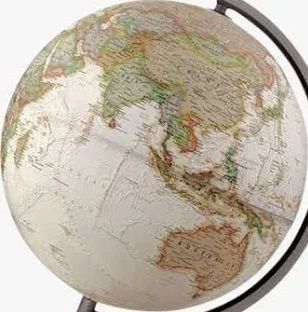Plaid 'n Boots
I think it is beyond doubt that where the plaid arrived so did boots, muddy boots, and sweat, tackles, headers, passes, shots and saves. Or put more simply wherever Scots went, or indeed go and have gone, so does and did footba', oor footba'. And, despite its predilection for sports involving the absurdly tall, the worryingly and probably chemically gross and eating rather than watching, America is no exception. Soccer had been in the 1920s and now is once more its growth sport but the roots across the pond can be traced back not just a century but a century and half to when men, mostly wee Scots men, immigrant more often than not out of the necessity of poverty, brought themselves, their passion for the round ball and their organisation to wherever their feet had found their new home. They started kick-abouts, they scrabbled patches of ground, formed ad-hoc teams, they founded clubs and gave them titles that included Scotland or Scottish, reflected Caledonia, recalled home cities, remembered their favourite sides there, and most of all emblazoned the curious emblem of their native land, the thistle.
And simply tracking those club formations gives us as good an idea as any of the where, the when and perhaps the why of that migration. It began in New York. Doesn't always have to? In the same year, 1873, that saw the formation in Scotland of the first clubs apart from Queen's Park and Kilmarnock and the first games to be played in the Scottish Cup New York Caledonians was formed. It emerged presumably from the New York Caledonian Club, founded in 1856 but that is all that seems to be known. There are no names, no grounds, no fixtures.
And next would be Hartford in Connecticut with again few names and little pack-drill except that its late 19th Century economy was built on gun manufacture. It was the base for The Colt Patent Fire-Arms Manufacturing Company. Perhaps the hoofers of leather on a Sunday, the amateur hot-shots, were making weapons every other day of the week.
New York (NYC) Caledonians 1873
(Richmond (VA) Caledonians 1874)
Hartford (CT) North Scotlands & South Scotlands 1876
St. Louis (MO) Thistles 1881-88
Paterson (NJ) Caledonian Thistles 1883-85
Kearny (NJ) Rangers 1883
(Kearny (NJ) Clarks ONT, Nov. 1883)
New York (NYC) Thistles 1884-91
River Point (RI) Clydes [founded as Vale of Clyde] 1885-91
(Fall River (MA) Rangers 1885)
Paterson (NJ) Thistles 1885-91 (known as Rangers 1888)
Danbury (Conn) Caledonians 1886
Niagara Falls (NY) Rangers 1886
Fall River (MA) Tower St. Rangers 1886
Newark (NJ) Caledonians 1886-91
Scranton (PA) Caledonians 1888-89
Minneapolis (MN) Thistles 1888-90
Chicago (IL) Thistles 1888-91
Holyoke (MA) Scotia Athletics 1889
Chicago (IL) Scottish Shields 1889-90
Lonsdale (RI) Thistles 1889-90
Philadelphia (PA) Thistles 1890-91
San Francisco (CA) Thistles 1890-91
Springfield (MA) Caledonians 1890-91
Holyoke (MA) Rangers 1891 or earlier
Lowell (MA) Thistle 1891 or earlier
Cumberland (RI) Rangers 1891 or earlier
Paterson (NJ) True Blues 1892 or earlier
Barre Rangers (VT) 1892 or earlier
Pawtucket (RI) Thistles 1893 or earlier
Indianapolis (IN) Caledonians 1894 or earlier
Kearny (NJ) 1895 Scots Americans
Kearny (NJ) Caledonians 1896 or earlier
Salt Lake Rangers 1905 or earlier
Niagara Falls Rangers (2) 1909
Salt Lake Caledonians 1920 or earlier
After that was something of a pause, something of a move partially across the country to St. Louis, Missouri before something of a filling-in between 1883 and 1886. Two clubs opened in Paterson in New Jersey, a centre for silk with weavers, many from Scotland, drawn in. At the Clarks Thread Mill in the same state Kearny with its influx of spinners from Paisley ONT was founded, whilst across the river in Newark, the state capital, the Caledonians were formed. And second club in New York, the Thistles, too opened its doors, whilst Rhode Island was included for the first time, with the forming in eastern Rhode Island of the Clydes of River Point with its bleachery and print-works. The result was a competitive hub of several like-minded teams in New York and Jersey reaching up into southern New England linked by the railway. There was competition and with other teams it is not surprising that in 1884 the American Football Association was formed and the American Cup instigated, which in turn set up another flurry. 1888 and 1889 saw a Caledonian in Pennsylvania in Scranton with its coal-mining and railways, a Thistles in Lonsdale, Rhode Island, amongst the Pawtucket mills and a Scotia in Holyoke and its paper mills in southern Massachusetts. The eastern limits were both extending and consolidating, just as for the first time the Great Lakes and Mid-West were opening too. Niagara Falls in up-State New York had its Rangers. Chicago and Minneapolis would acquire their own Thistles and the former also a Scottish Shields.
And then there would be two final flurries at least in this first wave. There would be new clubs. In Pennsylvania the Caledonians of Scranton would be joined by a Thistles of multi-industrial Philadelphia. In Rhode Island Pawtucket would also acquire a Thistles of its own, Cumberland and its mills a Rangers, this as in southern Massachusetts both Fall River and Holyoke would do the same just as its neighbour Springfield, with tyres, more guns, Smith and Weston and railway-cars, added a Caledonian. And further north too Lowell, also a textile town, there would be a new Thistle, whilst across the border into Vermont Barre with its stone -quarries yet another Rangers. And on the far side of the continent Thistles too would reach the Pacific at the European melting-pot that San Francisco was becoming, this as back in what is without doubt the spiritual home of US soccer, New Jersey, there was consolidation. Kearny got its Caledonians and Scots-Americans and Paterson its True Blues.
